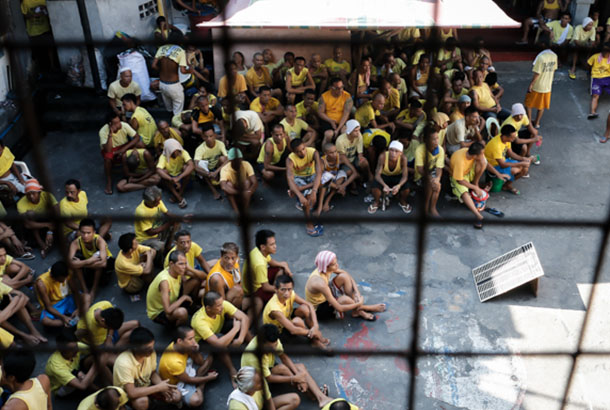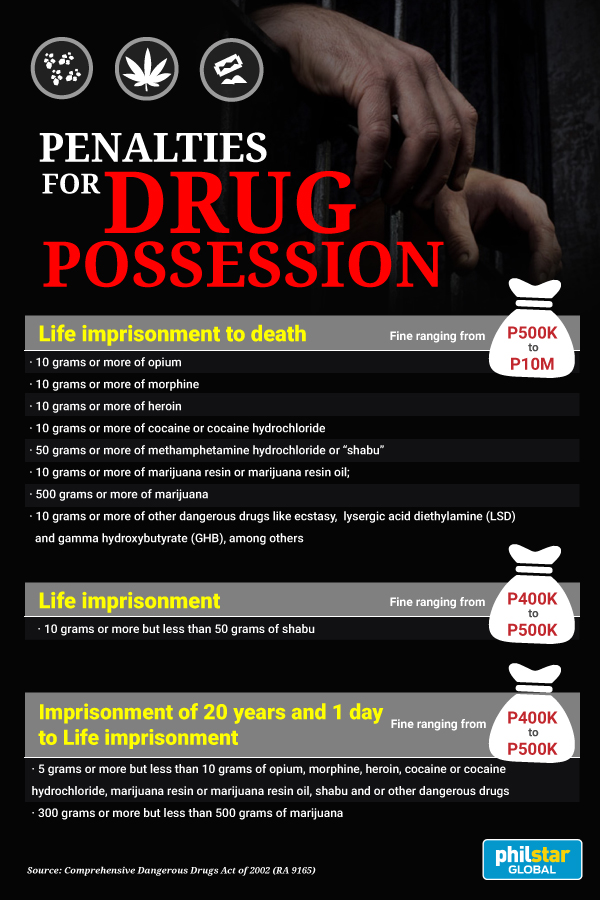Philippine jails 511% congested, audit finds
June 16, 2017 | 4:25am

In this Sept. 5, 2016 photo, inmates at the Quezon City jail seek refuge in the shade during a hot afternoon. Over 2,000 inmates were detained in September last year at the congested jail which ideally could only accommodate 800. Efigenio Toledo IV
MANILA, Philippines — The country's jails are already overpopulated by 511 percent as the number of inmates ballooned to 126,946 as of the end of 2016 while the total ideal jail capacity remains at 20,746 inmates, the Commission on Audit said.
“As of December 31, 2016 the BJMP (Bureau of Jail Management and Penology) has a total jail population of 126,946 which exceeded the total ideal capacity of 20,746 having a variance of 106,200 or has a total average of 511 percent of congestion/overcrowding or clogging,” the COA said in its annual audit report posted on its website Friday.
The total number of inmates increased by 30,544 from 2015, the report noted.
The audit body said this overcrowding in the country's district jails, city jails, municipal jails, extension jails, and female dormitories violates BJMP's own “Manual on Habitat, Water, Sanitation and Kitchen in Jails” as well as the United Nations' “Minimum Standard Rules for the Treatment of Prisoners.”
The COA noted that under the BJMP manual, the ideal habitable floor for each inmate is 4.7 square meters and the ideal maximum number of inmates per cell should only be 10.
The audit body said the congestion in jails are already resulting in “health and sanitation problems [and] increased gang affiliation of inmates.”
“To sustain survival, inmates hold on to gangs or 'pangkat' where they find protection, network of social support and most important, access to material benefits, which are scarce in highly congested facilities,” the COA said in its report.
Drug war, slow moving cases
The state auditors attributed the jail congestion mainly to the “increase in the number of drug-related cases in the country” as well as the court’s slow or no action on the pending cases “due to lack of judges, postponement of hearings and the slow disposition of criminal cases that carry the penalty of reclusion perpetua or life imprisonment.”
The court also noted that many detainees qualified to post bail remain in jail due to poverty.
“Some cases were bailable but detainees who are below poverty line cannot afford to post bail so they were stuck in the jails,” the report read.
MUST READ: Casualties of Rody's war
The report further noted that the lots where some jail buildings were constructed “were of limited space, hence, construction or expansions horizontally of the said buildings may not be possible.”

Unfinished constructions
The same report noted that the construction of two bigger jail buildings in Ilocos Region, specifically in the municipalities of Malasiqui and Urbiztondo in Pangasinan, remain uncompleted despite the total funding of P1.388 million way back in 1996 and 1999, respectively.
The COA said a funding of P576,200 was also allocated to Caraga for a municipal jail in Alegria, Surigao del Norte but the project remains unfinished 16 years after the construction began.
The report also noted that four more jails in Western Visayas with total funding of P12.388 million and two more jails in Zamboanga Peninsula with a funding of P4.826 million and P8.893 million, respectively, “failed to meet the completion target dates” stated in the contracts.
Most congested regions
The audit team recorded the highest congestion rate in Centr with total population of 12,490 inmates versus its total ideal capacity of 1,178 or a variance of 11,312 inmates (961% congested); followed by Ilocos Region with total population of 4,962 inmates against its total ideal capacity of 528 inmates (840% congested); and Zamboanga Peninsula with 5,575 inmates against its total ideal capacity of 691 inmates (707% congested).
The jails in the Autonomous Region in Muslim Mindanao, on the other hand, remains in a favorable condition for the whole year with 278 inmates amid over its total capacity of 275 or just 1 percent congestion rate.
The audit body recommended to the BJMP to speed up the ongoing construction of more jail buildings and to scout for possible lot donations from the local government units for additional jail sites.
The COA also urged the BJMP to improve the implementation of its existing programs to decongest jail cells such as the Good Conduct Time Allowance and the release on recognizance which both allow compliant inmates' early release from detention in exchange of rendering community service activities and paying other obligations.
BrandSpace Articles
<
>
- Latest
- Trending
Trending
Latest






























